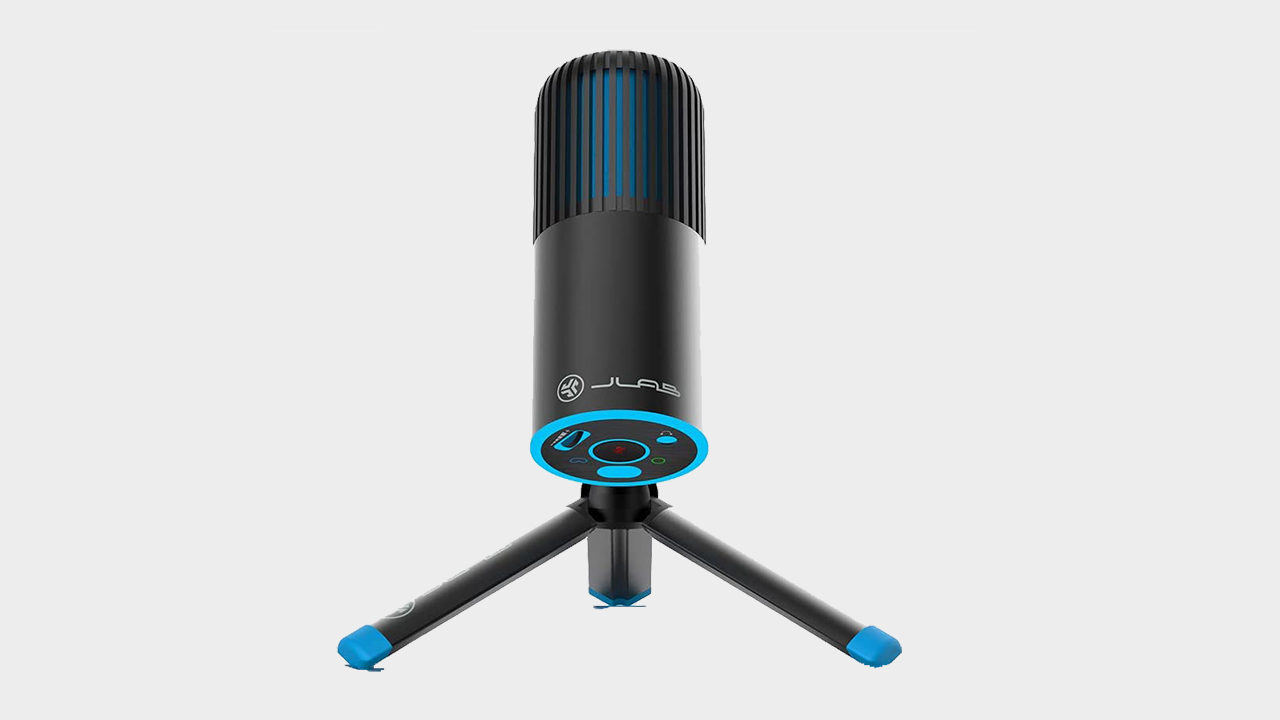Our Verdict
Streamers on a budget can do worse than the impressive $50 JLab Audio Talk GO USB microphone.
For
- Good starter mic
- Great Price
- Portable design
Against
- Light on features
- Tinny vocal recordings
PC Gamer's got your back
A relative newcomer to the scene, JLab Audio is probably best known for affordable audio products, such as budget headphones and speakers. But its latest releases represent a new line of USB microphones for streaming, podcasting, and gaming. The Talk series of mics attempt to cover every type of streamer, big and small. The Talk PRO ($150) designed for the professional streamer, the Talk ($99) for the entry-level podcaster, and this budget option, the Talk GO ($50). Although you could probably bring the price down on all of them with the right JLab discount code.
Honestly, the microphone I've been most curious about is the Talk GO with its two condensers and a resolution of 96kHz/24Bit. While the options for $100 + mics are vast, there are almost no viable options around this $50 price point.
The Talk GO uses two directional patterns (cardioid and omnidirectional). Cardioid is no surprise, but seeing omnidirectional is a welcome surprise for a microphone at this level. This means you can plop down the GO in the middle of the table for group interviews or panel discussions.
The plug and play microphone and accompanying tripod weighs in at just under a pound; the GO sure is a lightweight mic. The hard plastic chassis gives me some concern about its durability over long term use and travel, and maybe a smart idea would have been including a travel case or pouch, but then that would add to the price.
Price: $50
Condensers: 2
Directional Patterns: Cardioid and Omnidirectional
Controls: Volume Control and Quick Mute
Recording Sample Rate: 96kHz
Bit Depth: 24-bit
Weight: 0.6 lbs (with tripod)
Warranty: 2 year
The Talk GO's unobtrusive size makes it ideal for small spaces, which is especially useful in case your desk can't accommodate a boom arm.
The powder blue accents, along with the bright light wheel, makes for a fresh design. Aside from looking dope, the light wheel lets you know what directional pattern mode you're using.
Blue means cardioid; green is omnidirectional, and red being mute. Holding down the mute button is how you switch patterns and has so far proved pretty noob proof, which is all you can ask. All of the Talk series microphones have a simple sleekness to them that I don't hate.
Keep up to date with the most important stories and the best deals, as picked by the PC Gamer team.



The Talk GO will surprise a lot of folks by virtue of it not sounding too bad despite having just two condensers. When I recorded some lines, my voice was more tinny than I would prefer, and my Ps popped an awful lot. For everyday use, such as conference calls or podcasting, it's okay, but if you're looking crisp clearer vocals for music performers, you are going to have to expand your budget upgrade to the Talk PRO.
The JLab Audio Talk GO is probably the only $50 USB microphone you can buy aside from the aging Blue Snowball ICE (if you can find one) that's worth a damn. If you're starting as a content creator with a tight budget, you go do a lot worse than the Talk GO's size, sound, and price.
Streamers on a budget can do worse than the impressive $50 JLab Audio Talk GO USB microphone.

Jorge is a hardware writer from the enchanted lands of New Jersey. When he's not filling the office with the smell of Pop-Tarts, he's reviewing all sorts of gaming hardware, from laptops with the latest mobile GPUs to gaming chairs with built-in back massagers. He's been covering games and tech for over ten years and has written for Dualshockers, WCCFtech, Tom's Guide, and a bunch of other places on the world wide web.


